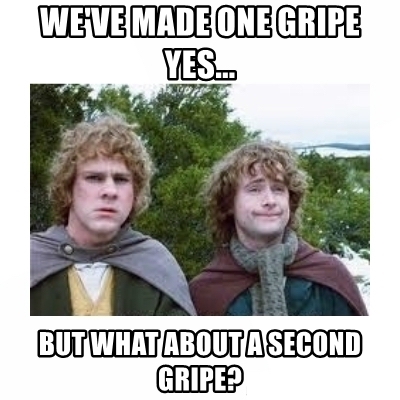Welcome back, dear readers, to yet another lovely week in the world of workers’ compensation! Now, do you know what would happen if you sat a dozen workers’ compensation participants – adjusters, risk managers, attorneys, or judges – down at a table and asked them to state the single most frustrating thing about California’s workers’ compensation system? You’d get at least two dozen answers!

Yes, our system offers much to complain about. Listing all of them would test the attention span of your humble blogger’s beloved readers and likely give rise to a few workers’ compensation claims just from the effort, so I offer one in particular: the “evil twin” claim.
Applicant files a specific injury claim and takes his chances through the panel process. If things don’t work out so well between the QME and the trial, applicant need only say “oh, this isn’t my ACTUAL claim! This claim is just the evil twin of my real claim, which hasn’t been filed yet.” And so you get a cumulative trauma claim and the race to a new panel. The laws of nature and man give us all but one bite at the workers’ compensation apple, yet we on the defense side are often tasked with surviving two bites if not more. How fair it is to feel that this system aims to eat us alive!
So now I bring to your attention the noble case of Noble v. Ascena Retail Group, Inc., a panel decision handed down not too long ago. Applicant alleged a CT claim through 2017 and an orthopedic panel was obtained to resolve the dispute. The ortho QME found that there was no CT at all, but rather the complaints stem from a specific injury. Applicant then agreed to dismiss her claim with prejudice at trial, only to file a NEW application that same day alleging a specific injury!
Applicant then obtained a panel in pain medicine to address the specific injury in 2017, as originally found by the orthopedic QME. Defendants naturally objected and the parties proceeded to trial on various issues, among them whether applicant was entitled to a new panel QME.
Applicant filed a petition for reconsideration of the WCJ’s finding that applicant was not entitled to a new panel and was stuck with the orthopedic QME. The WCAB returned the matter to the trial level to develop the record further, but did offer some guidance. While initially citing its en banc decision in the Navarro case, which held that an applicant was not required to return to the same panel QME for a subsequently filed injury, the Noble panel noted “[d]ismissing the cumulative trauma claim while simultaneously filing a new claim form for the specific injury and requesting a new QME panel does not have an aboveboard appearance to it…”
From the panel opinion, it appears that applicant might be complying with the letter of the law as outlined in Navarro but running contrary to the guidance provided in Navarro that “it is constitutionally required that workers’ compensation proceedings be expeditious”, noting “[i]t is unclear why applicant did not simply amend her cumulative trauma injury claim to be a specific injury claim to conform to proof upon receipt of [the orthopedic QME’s] opinions.”
So, dear readers, what’s to be done? Navarro is an en banc decision and thus is binding authority.
Perhaps the next time California relapses into “workers’ compensation reform frenzy” a proper amendment to the Labor Code would include a restriction on new panels to the dates of injury, rather than the dates that claim forms are filed, as per Navarro, would all be reviewed by the same PQME?
Perhaps there are more regulations necessary to define this particular tactic as “bad faith” giving rise to costs and sanctions?
Well dear readers, you need only elect your humble blogger and several dozen of his clones to the legislature and the Governor’s mansion, and you may consider the problem fixed. Until then… well, this blog will be here to commiserate with you through and through.
